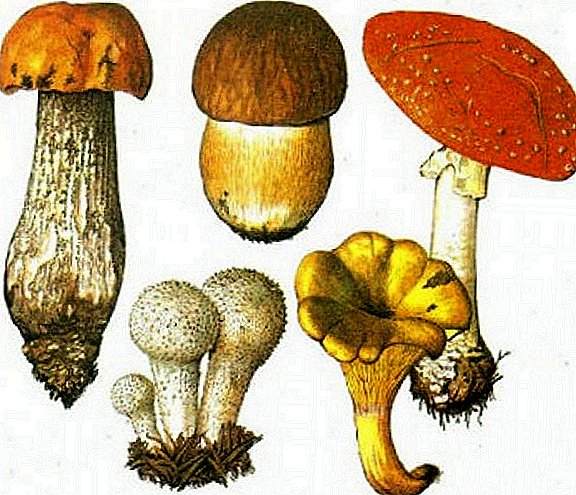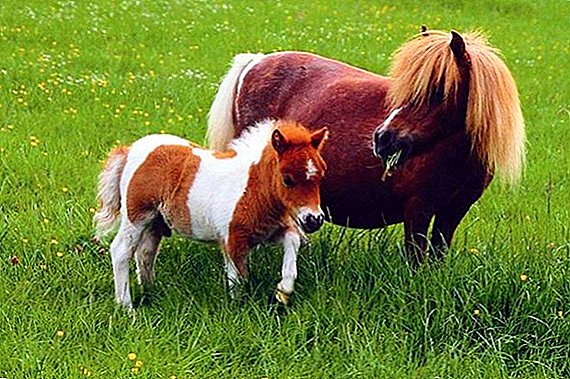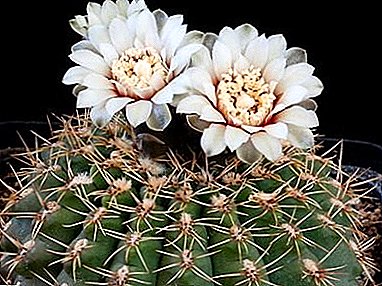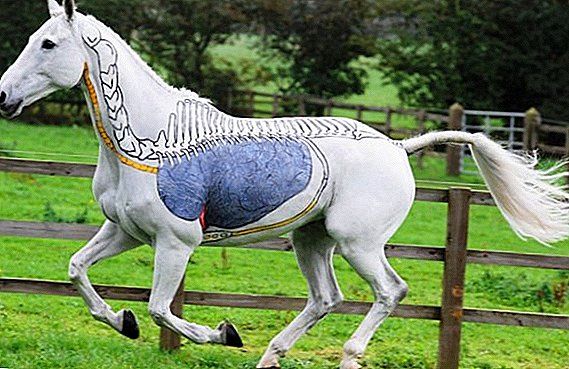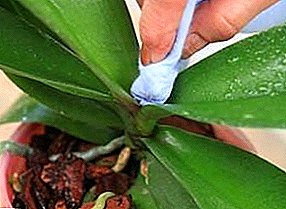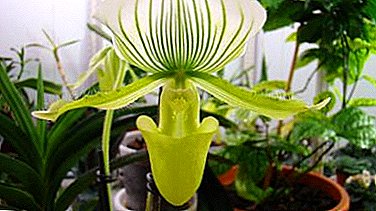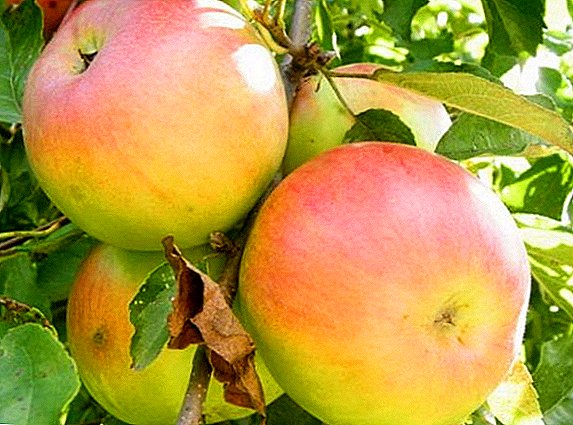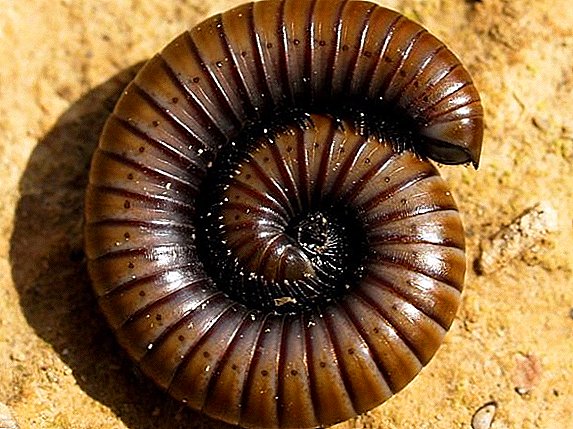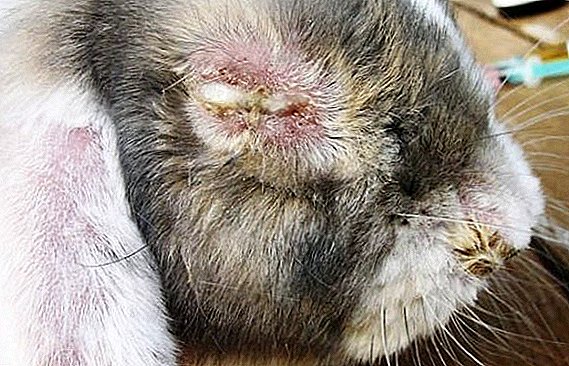 Rabbits are those animals that cannot do without regular vaccinations and checkups. At the same time, both meat and ornamental breeds suffer from ailments - they often have problems with the organs of sight, which will be discussed in our article. Next, we consider congenital and acquired diseases of the organs of vision, as well as the causes of their development and treatment.
Rabbits are those animals that cannot do without regular vaccinations and checkups. At the same time, both meat and ornamental breeds suffer from ailments - they often have problems with the organs of sight, which will be discussed in our article. Next, we consider congenital and acquired diseases of the organs of vision, as well as the causes of their development and treatment.
Congenital
Congenital diseases include those that result from deviations during the development of the fetus or are hereditary.
Cataract
This is a disease that causes a darkening of the lens of the eyeball, as a result of which its carrying capacity is significantly reduced. Since the lens performs the function of a conductor that transmits light, clouding affects visual acuity. In the case of a strong clouding of the eyes completely loses the ability to transmit visual information.  The main reason, according to doctors, is the poor diet of the mother or the presence of infectious or parasitic diseases during gestation. Congenital cataract occurs in the fetus at the stage of formation, therefore, it is problematic to identify the specific cause.
The main reason, according to doctors, is the poor diet of the mother or the presence of infectious or parasitic diseases during gestation. Congenital cataract occurs in the fetus at the stage of formation, therefore, it is problematic to identify the specific cause.
Find out what diseases of rabbits can be dangerous to humans.
Symptoms:
- clouding of the lens, which looks like a whitish spot overlapping the pupil;
- white or translucent discharge from the eyes;
- swelling of the eyes;
- disorientation in space;
- formation of a white corner on the iris of the eye.
Sowing and urine and blood tests are performed to detect the presence of the pathogen. If no one is found, the cataract is considered congenital.  Treatment: Since the cataract is the denaturation of the protein that makes up the lens, the treatment is to remove the damaged area. The denatured protein cannot be returned to its original state, just as it is impossible to make the egg white after frying liquid and translucent again.
Treatment: Since the cataract is the denaturation of the protein that makes up the lens, the treatment is to remove the damaged area. The denatured protein cannot be returned to its original state, just as it is impossible to make the egg white after frying liquid and translucent again.
However, treatment is not limited to removal. If the cause is the activity of pathogenic organisms, then medical therapy is carried out to prevent a recurrence.
Much depends on the stage at which the treatment is performed, therefore it is extremely important to consult a specialist immediately after the onset of characteristic symptoms.
Important! In the case of the last stage of surgery, there is a high chance of developing glaucoma.
Glaucoma
Occurs due to increased pressure inside the eyeball. As a result, there is a gradual decrease in visual acuity, which eventually ends in blindness. With a constant increased pressure of the fluid inside the eye, retinal cells, responsible for the transmission of visual information, die.
Congenital glaucoma appears due to poor genetics. If the father or mother was diagnosed with glaucoma, then the chance of giving birth to young animals with such a disease increases several times. An alternative reason is poor nutrition or the presence of any infectious diseases in the rabbit during gestation, which is reflected in the form of a malformation.
 Gaukoma in a rabbit Symptoms:
Gaukoma in a rabbit Symptoms:
- bulge eyes;
- reduced vision, leading to partial disorientation;
- redness of the white of the eye.
It should be understood that the treatment of the old rabbit, which has a few years of life, is dangerous enough, so do not blame the doctor for inaction.
Treatment: It is not easy to identify this ailment even in humans, not to mention animals that cannot tell about the problem. As a result, this leads to the fact that the rabbit gets to the vet at the last or penultimate stage, when it is useless to treat the organ. In most cases, the eye is removed, after which symptomatic therapy is prescribed.
Did you know? Rabbits only distinguish between blue and green, as well as their shades. Red color their organs of vision do not see.In rare cases, drugs are prescribed to help reduce intraocular pressure. However, it is only supportive treatment that does not correct the problem. The animal still gradually loses sight, however it affects its activity to a lesser extent.
Acquired
All diseases resulting from the action of viruses, bacteria, parasites, as well as unfavorable external environment are considered to be acquired.
Conjunctivitis
This is a common disease that occurs in humans as well as in many domestic and wild animals. It is characterized by inflammation of the mucous membrane of the eye, resulting from the ingress of viruses or pathogenic bacteria (in rare cases).  Most often, conjunctivitis develops due to dirt on the eye mucosa. Also, the cause may be injury or poor sanitation. The visual organ reacts negatively to the stimulus, causing inflammation and then other characteristic symptoms.
Most often, conjunctivitis develops due to dirt on the eye mucosa. Also, the cause may be injury or poor sanitation. The visual organ reacts negatively to the stimulus, causing inflammation and then other characteristic symptoms.
Symptoms:
- abundant discharge of tears;
- eye protein redness;
- puffiness of the eyelids;
- negative reaction to light.
Important! Conjunctivitis may appear after infection of the nasopharynx.Diagnostics: A veterinarian examines the affected organs, after which a tear sample is taken. Tests show which pathogen caused the disease. Also interviewed the owner of the animal, so that he told about the changes in the behavior of the rabbit.
Treatment: if the cause of inflammation is the ingress of a foreign body, then the eye is washed, and then anti-inflammatory drugs are prescribed. After removing the inflammation, everything returns to normal.
Video: How to treat conjunctivitis in baby rabbits Bacterial conjunctivitis is treated with antibiotics in the form of drops. It may also be prescribed eye wash with disinfectants.
To treat the viral variant is problematic, since drugs that kill viruses do not exist in principle. Therapy is carried out using anti-inflammatory drugs, as well as drugs that prevent the occurrence of a bacterial infection. May be prescribed funds that improve the functioning of the immune system.
Important! Medications prescribed only by a veterinarian. It is forbidden to use drugs intended for humans.
Keratitis
It is an inflammation of the cornea of the eye, which serves as a conductor, and is also responsible for the correct refraction of light. As a result, vision deteriorates and inflammation also occurs.  The cause is the activity of viruses or bacteria that destroy the layers of the cornea. In some cases, keratitis occurs after an organ injury.
The cause is the activity of viruses or bacteria that destroy the layers of the cornea. In some cases, keratitis occurs after an organ injury.
Symptoms:
- clouding of the outer shell of the eye;
- profuse tearing;
- eye protein redness;
- the glitter of the eyes disappears, they become dull;
- suppuration.
A common problem is allergy to rabbits, so we advise you to find out how an allergic reaction is manifested and how to treat it.
It is not possible to make a diagnosis at home, since it is possible to identify the pathogen only after conducting chemical analyzes with markers.
Treatment: surgery is not required. Anti-inflammatory, protective and antibiotic drugs are prescribed. The former help relieve puffiness and redness, the latter protect the organ from the external environment, and still others destroy the pathogenic flora.  After removal of the irritant, the veterinarian may prescribe drugs that accelerate the regeneration of corneal tissue - this allows you to quickly restore the functionality of the organ.
After removal of the irritant, the veterinarian may prescribe drugs that accelerate the regeneration of corneal tissue - this allows you to quickly restore the functionality of the organ.
Uveitis
It is an inflammation of the choroid, which causes severe discomfort paired with unpleasant symptoms, as well as visual impairment or its complete loss in the absence of treatment.
Rabbit owners will also find it helpful to know why the rabbit sneezes and how to help the animal during sunstroke.
The cause is an infection or mechanical damage. In the first case, both eyes are affected, in the second - only the injured organ.
Symptoms:
- spots on the cornea (outer layer) of the eye;
- frequent blinking;
- dry mucous membranes;
- constriction of the pupil, regardless of light;
- negative reaction to light.
 Surgical intervention is only necessary if the animal has a destroyed lens.
Surgical intervention is only necessary if the animal has a destroyed lens.Treatment: the veterinarian prescribes anti-inflammatory, antibiotic and atropine drops. In the course of treatment, it is necessary to remove inflammation and swelling, cleanse the mucosa from pathogenic organisms, and also “fix” the expansion of the pupil so that it does not expand and contract. Atropine drops are necessary in order to prevent the occurrence of adhesions that affect visual acuity.
Corneal ulcer
Also referred to as "ulcerative keratitis" (not to be confused with the above described disease). It is a serious inflammatory and destructive process that occurs in several layers of the cornea of the eye. The main feature is the violation of the integrity of tissues, that is, the eye loses some of the tissues, in place of which holes or microscopic wounds are formed.
It is useful to learn about common diseases of the ears in rabbits and methods of their treatment.
Corneal ulcer occurs due to the violation of the integrity of the layer (damage) and further infection. Also, the reason may be the constant erosion of the surface due to the influence of external factors.
Symptoms:
- the appearance of defects in the eyeball;
- lacrimation (epiphora);
- eye protein redness;
- increases sensitivity to light;
- white scurf can form on the surface of the organ.
 Diagnostics: it is impossible to distinguish an ulcer from uveitis without taking tests and conducting a thorough examination. For this reason, the specialist must take a sample for research. If analyzes show that pathogens are present in the material, and there is evidence of corneal destruction, only then is a corneal ulcer diagnosed.
Diagnostics: it is impossible to distinguish an ulcer from uveitis without taking tests and conducting a thorough examination. For this reason, the specialist must take a sample for research. If analyzes show that pathogens are present in the material, and there is evidence of corneal destruction, only then is a corneal ulcer diagnosed.The treatment is carried out through surgical intervention. Exclusively medical therapy will not give results, therefore it is forbidden to treat the animal with traditional methods or with the use of preparations intended for people.
Treatment: Specialists will surgically remove a dead film on the surface of the eye. Then apply point or furrowed microsurgery aimed at removing the dead layers of the cornea. If the dead tissue is not removed, there will be suppuration, followed by re-infection and inflammation of the organ.
Did you know? Rabbits eat food twice: of partially digested food arrived from the intestines, puseful bacteria extract valuable vitamins and minerals.
After surgery, antibiotics are prescribed to kill the infection, as well as to prevent a relapse, and drugs that promote corneal healing.
Dacryocystitis
This is an inflammation of the lacrimal sac, which is located directly under the organ of vision. As a result, the cavity swells, and the outflow of tears into the nasal cavity from the conjunctiva of the eye (the inner part of the lower eyelid, which is adjacent to the eyeball) is disturbed.  Dacryocystitis appears as a complication that occurs with viral and bacterial diseases of the upper respiratory system. That is, the cause is an infection from the nasal cavity in the lacrimal sac.
Dacryocystitis appears as a complication that occurs with viral and bacterial diseases of the upper respiratory system. That is, the cause is an infection from the nasal cavity in the lacrimal sac.
Symptoms:
- the formation of swelling under the eye;
- suppuration;
- weak organ swelling.
In parallel, the root cause is established, after which a comprehensive treatment is prescribed. It is important to understand that if the infection remains in the nasopharynx, then everything can happen again. For this reason, treating only the tear bag is pointless.
Learn what to do if coccidiosis, pasteurellosis, listeriosis, myxomatosis, and encephalosis are found in the rabbit.
Treatment: antiseptic and anti-inflammatory drops are prescribed that relieve puffiness and destroy bacteria. The specialist may insist on surgery (bag puncture), if the pus does not break out independently. The purulent masses inside the lacrimal sac cannot come out, but they follow into the nasal cavity - this can cause serious complications, so it is necessary to remove them.  In parallel, the treatment of the upper respiratory system with the use of antibiotics. If the infection spreads from the oral cavity, then an inspection and removal of the damaged tooth is carried out.
In parallel, the treatment of the upper respiratory system with the use of antibiotics. If the infection spreads from the oral cavity, then an inspection and removal of the damaged tooth is carried out.
Exophthalmos
The disease is characterized by a displacement of the eyeball forward due to the occurrence of suppuration. An abscess forms behind the organ, forcing it to move forward. As a result, the motor function is disturbed, and discomfort occurs.
Novice rabbit breeders will be useful to read about how to choose a rabbit when buying, how to determine the sex of the rabbit, as well as how many rabbits live on average.
The reason is infection of the teeth. Since the structure of the rabbit's skull suggests the proximity of the oral cavity to the organs of vision, tooth decay can cause a similar outcome.
Symptoms:
- bulging of one or both eyes;
- inability to blink;
- nervousness.
 Treatment: unfortunately, the animal will have to remove one or both organs of vision. After that, a special dental treatment is carried out and antibiotics are prescribed.
Treatment: unfortunately, the animal will have to remove one or both organs of vision. After that, a special dental treatment is carried out and antibiotics are prescribed.It is not possible to cure exophthalmos with medicines because the abscess is located behind the eyeball, respectively, in order to remove it, it is necessary to remove the eye. If this is not done, the organ of vision will simply fall out.
Eyelid Diseases
Next, consider the acquired diseases of the eyelids, which appear in rabbits. All illnesses are diagnosed only by a specialist, after which, in most cases, surgical intervention is performed.
Blepharitis
This is an inflammation of the lower and upper eyelid. Causes are the effects of aggressive chemicals on the eyelids or mechanical damage. Blepharitis may develop due to sunburn or ingestion of detergent.  Symptoms:
Symptoms:
- redness and swelling of the eyelids;
- the appearance of small particles of dead skin;
- the rabbit constantly scratches his eyes;
- protein redness (conjunctiva);
- bleeding from the ciliary margin;
- ulceration
Important! At the last stage of the eye completely overlaps the eyelids. Purulent masses begin to flow from it.Diagnostics: an external examination is carried out, after which the doctor interrogates the host to determine the cause of blepharitis. The diagnosis is indicated along with the stage of development of the disease.
Treatment: if blepharitis is at the initial stage, then it is enough to use anti-inflammatory and antibacterial agents, the basis of which are not mushrooms, that is, you can do without antibiotics.
If blepharitis at the second or third stage, when the organ of vision turns into a large swelling, then you can not do without antibiotic and sulfanilamide funds.
Entropy century
Most often occurs as a complication after keratitis or blepharitis. The animal's eyelids turn inward so that the eyelashes touch the eyeball, causing redness and discomfort.
Alternative causes - congenital defect, cartilage deformity, convulsive contraction of the eye muscle.  Symptoms:
Symptoms:
- photosensitivity;
- lacrimation;
- redness of the whites of the eye;
- with constant irritation - the formation of scars and ulcers.
Treatment: for the eyelid to return to its original place, it is necessary to perform a small operation. After it, anti-inflammatory and antibacterial agents are prescribed. With severe damage to the cornea and surrounding tissue, there is a high chance of purulent conjunctivitis.
Did you know? Rabbits have a weak heart, as well as a poorly developed nervous system, so they can literally die from fear, or rather, from a heart failure.
Inversion century
In fact, this is the same entropy, only the eyelids droop down and move. There is swelling and inflammation.  The causes are similar to entropy of the eyelids, but paralysis of the facial nerve is also added, which can also cause deformity.
The causes are similar to entropy of the eyelids, but paralysis of the facial nerve is also added, which can also cause deformity.
Symptoms:
- profuse tearing;
- drying of the eyeball;
- exposure of the conjunctiva;
- slight swelling.
Treatment: lower eyelid returns to the site surgically. This is followed by rehabilitation, during which the animal should be given anti-inflammatory and antibacterial drugs. If it is necessary to destroy a bacterial infection, then antibiotics are prescribed.
Important! In no case do not try to "put in place" saggy eyelid: you can significantly worsen the condition of the rabbit.
Preventive measures
- Year-round nutrition with the addition of vitamins and minerals.
- Vaccination against common diseases.
- Keeping the cell clean.
- Placing the cell in a place where it does not fall sunshine, there is no draft.
- Regular inspection of the organs of vision.
- Warning of contact of animals with hazardous chemicals.
 Despite the fact that most diseases of the organs of vision can be cured, with the maintenance of meat breeds, this option leads to high financial costs, so the veterinarians are treated only with mild illnesses. However, if you keep a decorative rabbit, then it must be shown to a specialist in a timely manner in order to prevent death.
Despite the fact that most diseases of the organs of vision can be cured, with the maintenance of meat breeds, this option leads to high financial costs, so the veterinarians are treated only with mild illnesses. However, if you keep a decorative rabbit, then it must be shown to a specialist in a timely manner in order to prevent death.


